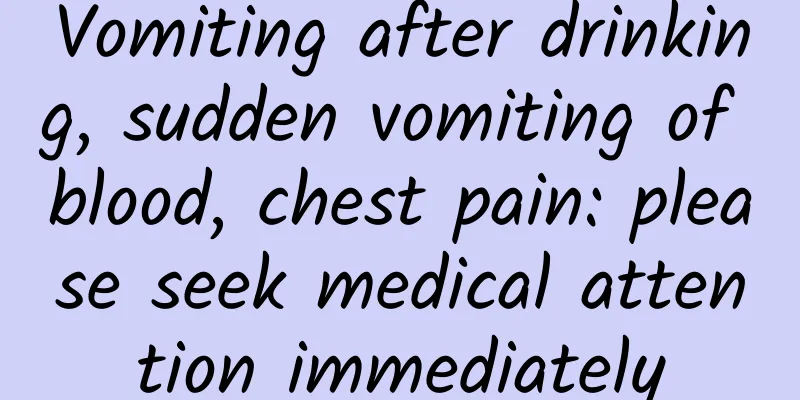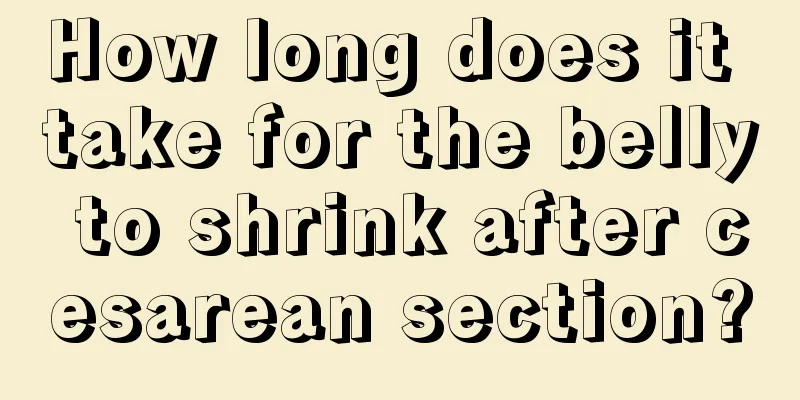Vomiting after drinking, sudden vomiting of blood, chest pain: please seek medical attention immediately

|
This is the 3897th article of Da Yi Xiao Hu In 1925, Marlowe, an authoritative American pathology professor, was commissioned to perform a pathological autopsy on a middle-aged male corpse. The commission gave a detailed description of the patient's condition: the patient had always been in good health, but he attended a dinner party three days ago and drank strong whiskey. That night after returning home, he vomited violently, first vomiting food, then vomiting a small mouthful of blood, and then vomiting a large mouthful of red blood. He kept beating his chest with his hands and yelling in pain. After the family doctor injected antiemetic and hemostatic drugs, there was still no relief, so his family sent him to the nearest hospital. After arriving at the emergency room, his blood pressure could no longer be measured. The attending doctor believed that it might be hemorrhagic nephritis caused by alcohol, ulcer disease or ruptured bleeding of esophageal varicose veins due to liver cirrhosis. When the surgeon came for consultation, the patient was in a state of severe hemorrhagic shock and could not be operated on, and the patient eventually died. Professor Marlowe performed a detailed dissection of the digestive system of the corpse and found a large amount of blood clots in the stomach cavity, and three longitudinal cracks at the junction of the cardia and esophagus, which had reached deep into the muscle layer and were covered with black blood scabs. He did not find the esophageal varices caused by ulcers and liver cirrhosis suspected by the first doctor. Professor Marlowe, who has always been rigorous in his studies, only objectively recorded what he saw in the dissection and did not draw a conclusion on the cause of death. In 1927, Austrian doctor Weiss again discovered similar cases after alcoholism, and they published four cases in a medical journal to warn the world not to drink alcohol. In their memory, the disease was named Marlowe-Weiss syndrome (MWS) - due to factors such as severe vomiting and sudden increase in intra-abdominal pressure, the longitudinal tearing of the distal esophagus and cardia mucosa caused a syndrome with upper gastrointestinal bleeding as the main manifestation. Why can severe vomiting cause tearing and bleeding of the cardia mucosa? At the junction of the esophagus and stomach, there is a circular sphincter about 2-4 cm long. This structure is like the rubber band that girls use to tie their hair. It is a valve that regulates the opening and closing of the esophagus. When swallowing, the sphincter is in a relaxed state, allowing food to pass smoothly. The rest of the time, it is in a state of continuous contraction, separating the esophagus and stomach, thereby preventing stomach food from flowing back into the esophagus. When vomiting or retching violently, the intragastric pressure suddenly increases, and the muscles of the cardia and lower esophagus can expand with a certain degree of elasticity, but the mucosal layer that is attached to the muscle layer has poor ductility and cannot expand accordingly, which can easily cause the mucosal blood vessels in this area to tear and cause bleeding. The typical manifestation of Malove-Weiss syndrome (MWS) is severe retching or vomiting. In mild cases, there may be no vomiting of blood, only black stools. The depth of the mucosal tear causes different amounts of bleeding. When the tear reaches the venous plexus and arterial plexus of the submucosal layer of the esophagus, it causes massive bleeding, leading to hemorrhagic shock and death, as described at the beginning of this article. When alcohol abuse causes vomiting blood, fiber gastroscopy should be performed as soon as possible. If diagnosed with Marlowe-Weiss syndrome (MWS), antispasmodics should be used immediately to stop vomiting, and norepinephrine should be added to cold saline and poured into the stomach to stop bleeding. If there are a lot of stomach contents, a gastric tube should be inserted to extract the retained gastric contents, which is beneficial for stopping vomiting and preventing the esophageal cardia or gastric mucosa from tearing again. If the tear has reached the submucosal layer and is accompanied by continuous bleeding from small arteries, surgical treatment must be taken to cure the esophageal cardia tear syndrome. Most esophageal cardia tear bleeding is painless, and a few may be accompanied by upper abdominal pain and back pain. If there is severe pain accompanied by dyspnea, be alert to spontaneous esophageal rupture. It was first reported by Boerhaave in 1924 and is also called Boerhaave syndrome. Because it often occurs after vomiting, it is also called esophageal rupture after vomiting. The mechanism is the same as that of esophageal cardia mucosal tear. When vomiting violently, the pressure in the stomach surges. At the same time, the negative pressure of the chest cavity is attracted to the chest cavity, and the lower esophageal muscle layer is fragile, resulting in longitudinal rupture of the esophagus. A large amount of chyme and gastric digestive fluid flows into the chest cavity through the rupture, causing chemical inflammation of the chest and abdomen. The symptoms of spontaneous esophageal rupture are varied and complex, mostly epigastric pain, but also behind the sternum, in the rib cage, in the lower chest, and sometimes radiating to the shoulders and back. When the symptoms are severe, there may be shortness of breath, dyspnea, purpura, shock, etc., and physical examination often shows acute abdomen. X-ray chest fluoroscopy is of great value. Many patients are found to have unilateral hydrothorax or mediastinal emphysema through emergency chest fluoroscopy. Because of age, medical history, and electrocardiogram manifestations, middle-aged and elderly people are easily misdiagnosed as acute coronary syndrome, pulmonary embolism, and aortic dissection at the first visit. Once diagnosed, surgery should be performed immediately. Cut off the source of contamination, control local and systemic infections, strengthen nutritional support therapy, and restore the continuity of the esophagus. At wedding banquets, gatherings with friends and relatives, and housewarming celebrations, drinking in moderation can improve the atmosphere and communicate emotions. However, if you insist on persuading others to drink, it will not only hurt your mood but also your body. Therefore, you must pay attention to the degree of drinking, do not drink excessively, do not persuade others to drink, and stop drinking when you are satisfied. Author: Wang Hailong, attending physician, Hematology Hospital, Chinese Academy of Medical Sciences |
<<: Lifestyle changes and drug treatment for dyslipidemia
Recommend
How can girls lose weight on their shoulders?
One of the problems that girls are most worried a...
What happens if there is brown blood in the leucorrhea?
Many female friends always have some abnormal leu...
Will multiple abortions lead to cervical erosion?
Usually, many reasons may cause cervical erosion ...
Can I have an abortion by taking medicine at 40 days of pregnancy?
They all choose abortion due to unavoidable reaso...
These 4 types of foods don’t taste salty, but they have such high sodium content? !
If your blood pressure is high, eat less salt - t...
Can I eat horse meat during menstruation?
Horse meat is the longest-standing meat consumed ...
The Battle to Defend Banana
This is the 4829th article of Da Yi Xiao Hu Many ...
Small acne pictures on the areola
Normal women's nipples should be relatively s...
How do women maintain their uterus?
There are many ways to maintain the uterus. We al...
This woman's action suggests that you have a play
Experts say there are subtle ways to help you for...
A woman got pregnant after quitting smoking for one month
Whether it is direct smoking or secondhand smoke,...
A woman has a mole in the middle of her upper lip
From the perspective of physiognomy, most of the ...
Does polycystic ovary syndrome have a dominant follicle?
Many female friends may experience symptoms of po...
How to cook fish maw stew? Who should eat fish maw stew and who should not eat it?
There are many ways to stew fish. You can steam i...
The "little secret" of children's rehabilitation
With the rapid development of perinatal medical t...









